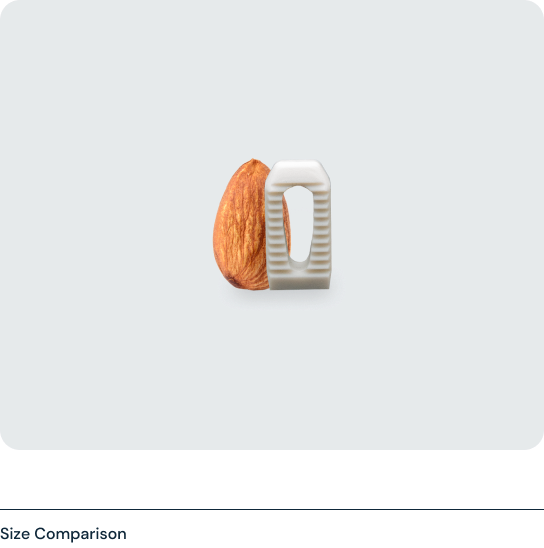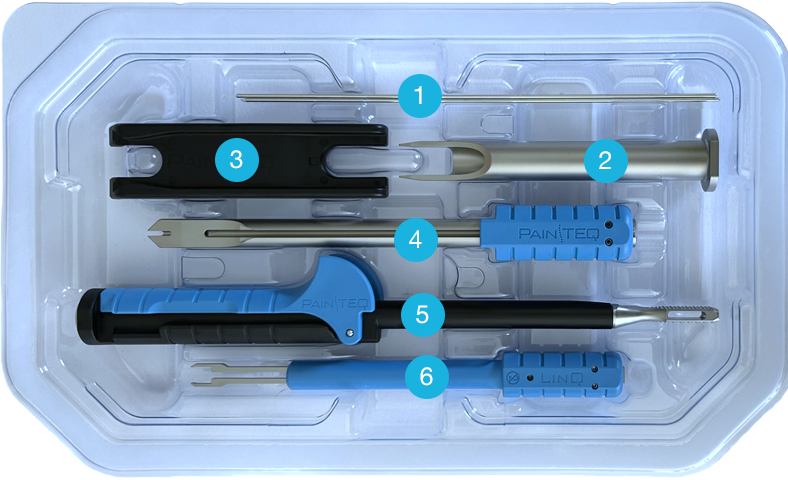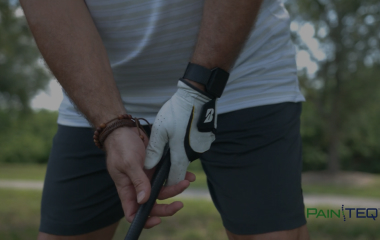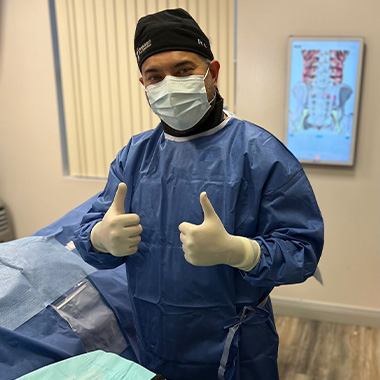Improve Your Patient’s SI Joint Outcomes with the LinQ SI Joint Stabilization System
Have a PainTEQ representative reach out to learn more today!
"*" indicates required fields
What is LinQ?

The LinQ SI Joint Stabilization System provides SI joint dysfunction patients with a minimally invasive solution to combat pain. After a thorough diagnostic process, physicians can help alleviate, and in many cases eliminate, chronic pain by placing a single LinQ allograft into the SI joint. This single implant helps patients immediately regain joint stability – and with its large graft window, the LinQ SI Joint Stabilization System helps create an ideal environment for long-term fusion.
Single-use Instruments
Smart, Sterile, Ready… Every Single Use.

- 1. Glide Pin
- 2. Cannula
- 3. H Bar
- 4. Dilator
- 5. Decorticator
- 6. Implant Inserter
Real LinQ SI Joint Patients
Featured Articles
Outcomes of a Posterior Approach to SI Joint Fusion with LinQ® Reflect Clinical Efficacy and Durability at 12 Months
March 20, 2024
SI joint fusion with PainTEQ's LinQ SI Joint Stabilization System shows promise for treating patients with sacroiliac joint dysfunction.
PainTEQ Announces Successful Completion of First In-office LinQ Procedure Under New CMS Billing Code
January 18, 2024
The first in-office LinQ procedure was successfully completed on January 17, 2024, by Nomen Azeem, MD.
Patent Trial and Appeal Board Sides with PainTEQ in the Orthocision IPR Case
December 21, 2023
Judges of the Patent Trial Appeal Board (PTAB) unanimously sided with PainTEQ in a recent IPR trial with Orthocision.
Improve Your Patient’s SI Joint Outcomes with the LinQ® SI Joint Stabilization System
Have a PainTEQ representative reach out to learn more today!
"*" indicates required fields









